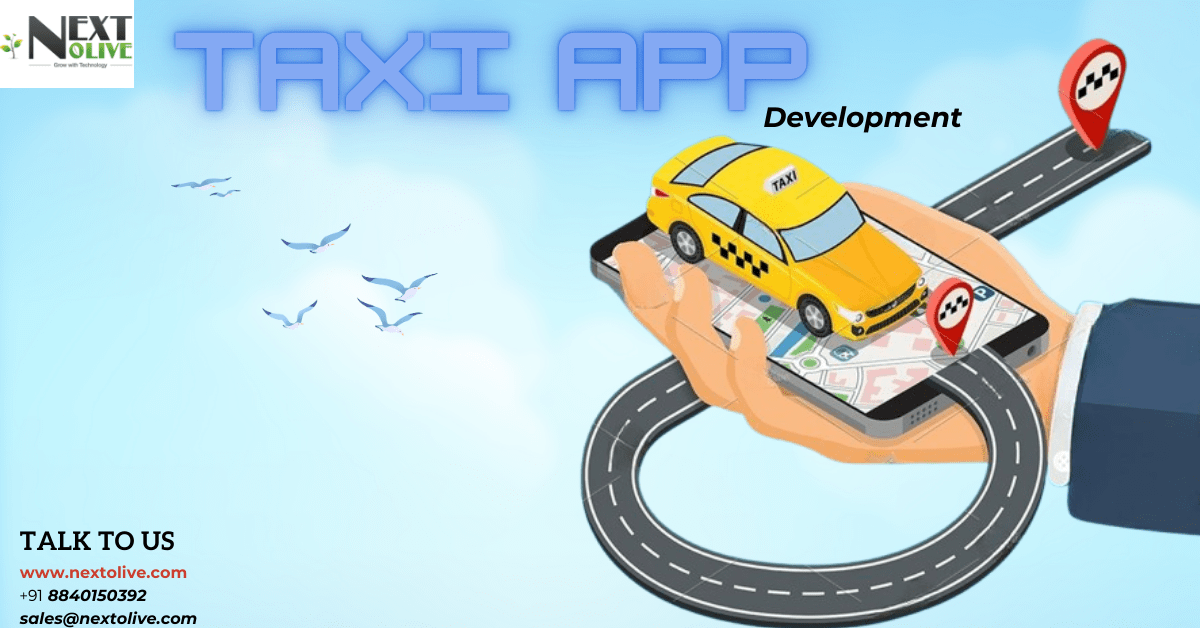Taxi Booking App Development: A Revolutionary Shift in Transportation

The transportation industry has witnessed a significant transformation in recent years, thanks to the rapid advancement of technology. Among the many innovations, taxi booking apps have revolutionized how people commute, offering convenience, safety, and accessibility at their fingertips. The rise of taxi booking app development has seen businesses rushing to cash in on this trend, creating a seamless way for users to book rides from their smartphones. Let's explore the nitty-gritty details of taxi booking app development, why it matters, and how businesses can harness this opportunity effectively.
✍️ AI is reshaping the digital world. Explore how AI-powered apps are built and why they deliver smarter user experiences.
What is a Taxi Booking App?
A taxi booking app is a mobile application that allows users to book rides at their preferred time, location, and destination using a smartphone. These apps typically connect drivers and passengers via an easy-to-use interface. Utilizing GPS technology, the apps provide real-time information, including live tracking, estimated arrival times, and route optimizations.
Popular taxi booking apps like Uber, Lyft, and Bolt have paved the way for startups and enterprises to invest in app development, targeting a wide array of users who seek quick, safe, and affordable transportation solutions.
Key Features of a Taxi Booking App
Creating a successful taxi booking app involves integrating essential features that enhance the user experience. Below are some of the most crucial features:
User Registration: Simple sign-up and login options using email, phone number, or social media accounts ensure users can access the app swiftly.
Ride Booking: Effortless ride-booking options allow users to input their pick-up and drop-off locations, view fare estimates, and book their rides in seconds.
Driver & Passenger Profiles: Both drivers and passengers can maintain personal profiles, fostering trust and transparency in the process.
Real-Time Tracking: GPS-enabled tracking systems deliver real-time updates on the driver's locationand estimated time of arrival.
Payment Integration: Seamless integration with multiple payment methods like credit/debit cards, digital wallets, and cash-on-delivery ensures flexibility for all users.
Push Notifications: Alerts and notifications about ride confirmations, estimated arrival times, and promotional offers keep the user informed.
Ratings and Reviews: Feedback mechanisms help maintain service quality by allowing users to rate their experiences.
Admin Dashboard: A powerful admin panel enables businesses to monitor operations, analyze data, and manage drivers/passengers.
The Development Process for Taxi Booking Apps
Developing a taxi booking app is a multi-step process that requires extensive planning and top-notch execution. Here’s a breakdown of the key stages:
1. Market Research and Planning
Begin by conducting in-depth research to understand your target market, competition, and audience preferences. Thorough planning helps determine the app features, unique selling propositions (USPs), and monetization strategies.
2. Choosing the Technology Stack
Selecting the right technology stack is pivotal for building a robust app. Technologies like React Native, Flutter, and Swift are commonly used for app development. Back-end technologies like Node.js, Python, or Ruby on Rails ensure scalability and smooth performance.
3. UI/UX Design
A user-friendly interface is critical for retaining customers. Focusing on intuitive navigation, visually appealing graphics, and simple workflows ensures the app stands out.
4. Development and Integration
Develop both the user-side and driver-side app modules, along with an admin dashboard. Integrate APIs for features such as payment gateways, push notifications, and location tracking.
5. Testing and Quality Assurance
Thorough testing eliminates bugs and ensures a seamless user experience. Both manual and automated tests should be conducted to validate the app's functionality and reliability.
6. Deployment and Launch
Once the app is ready, deploy it on platforms like the Google Play Store and Apple App Store. Use compelling marketing campaigns to maximize its visibility and reach.
7. Post-Launch Maintenance
Ongoing support and updates are crucial for maintaining app performance and adding new features based on user feedback.
You may read: A complete guide to develop a Taxi Booking App in 2025
Benefits of Taxi Booking App Development
1. Convenience for Users
Taxi booking apps have streamlined the ride-hailing process, making it more convenient for users. With just a few taps, they can book a ride regardless of time or location.
2. Increased Revenue for Businesses
For businesses, a taxi booking app can serve as an additional revenue stream, monetized through ride commissions, subscriptions, or advertising.
3. Cost Efficiency
Traditional taxi systems often involve high operational costs. With a driver-app mechanism, businesses can virtually eliminate overhead costs, like maintaining a physical taxi stand.
4. Real-Time Information
The availability of real-time tracking and updates instills confidence in the service, improving user trust significantly.
Taxi Booking App Development: A Revolutionary Shift in Transportation.
Enhanced Safety: Safety features like identity verification, SOS buttons, and emergency contacts are commonly integrated, ensuring a secure environment for users.
Challenges in Taxi Booking App Development
While the benefits are vast, developing a taxi booking app comes with its set of challenges.
Regulatory Compliance: Navigating through different regional or national regulations regarding transportation services can be tricky.
Competition: Standing out in a market dominated by big-name apps like Uber and Lyft requires exceptional branding and service differentiation.
Scalability Issues: Managing an increasing number of users, drivers, and data as the app grows can put a strain on technical infrastructure.
Data Security: Securing user data is a non-negotiable element, and failure to do so can lead to significant consequences.
High Initial Costs: The initial investment for developing a robust and feature-rich app is often considerable.
What Makes a Taxi Booking App Successful?
The success of a taxi booking app depends on its ability to cater to the needs of both drivers and passengers. Here are some tips to create a winning app:
Market Differentiation: Introduce unique features or value-added services like ride subscriptions, eco-friendly rides, or shared cabs.
Customer-Centric Design: Focus on building an easy-to-use interface and seamless booking processes.
Regular Updates: Keep your app updated with the latest security features and functionalities.
Effective Marketing: Drive downloads and engagement through targeted marketing campaigns, leveraging social media, search engines, and app stores.
Cost of Taxi Booking App Development
The cost of developing a taxi booking app varies depending on factors such as:
The complexity of features
- Platform (iOS, Android, or both)
- Development team location and expertise
- Time-to-market
On average, most apps range between $25,000 - $150,000 from development to deployment.
You can explore the Breakdown of Cost to Develop a Taxi Booking App
Why Now’s the Best Time to Invest in Taxi Booking Apps?
The demand for ride-hailing apps continues to grow as users increasingly rely on them for daily commuting. With advancements in AI, machine learning, and GPS technology, taxi booking apps have become more efficient, convenient, and cost-effective for both riders and drivers.
Benefits of Investing in Taxi Booking Apps
Increased ROI: As the demand for ride-hailing services increases, investing in a taxi booking app can generate high returns on investment.
Diversification: With multiple features such as carpooling, food delivery, and package delivery, a taxi booking app allows you to diversify your business offerings.
Automation: A well-developed taxi booking app automates the entire process from booking to payment, reducing manual labor costs and increasing efficiency.
Easy scalability: With the option to add the advance features.
Note: IndiBlogHub features both user-submitted and editorial content. We do not verify third-party contributions. Read our Disclaimer and Privacy Policyfor details.







